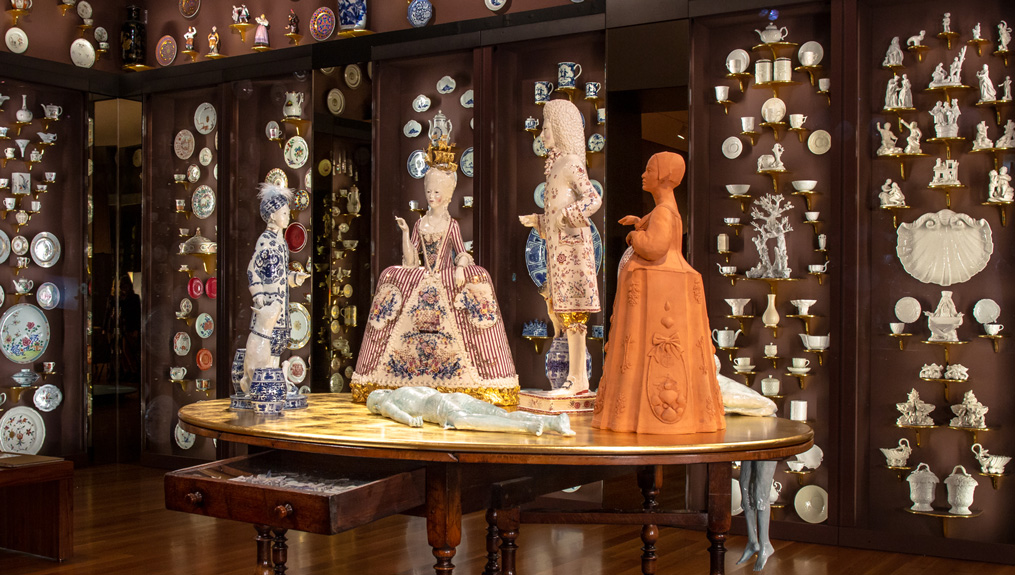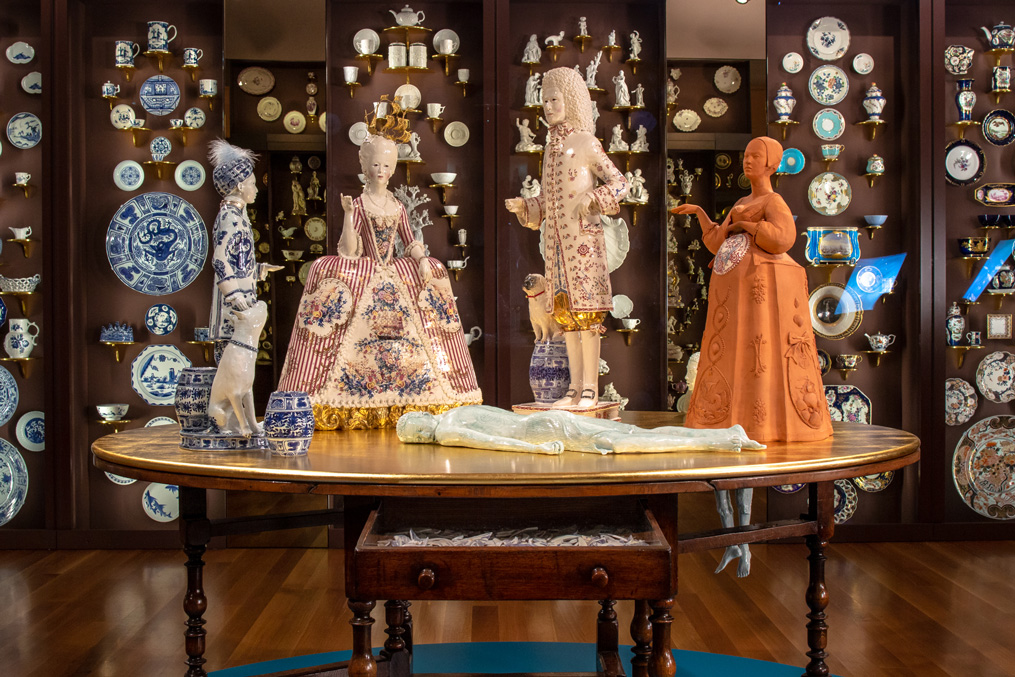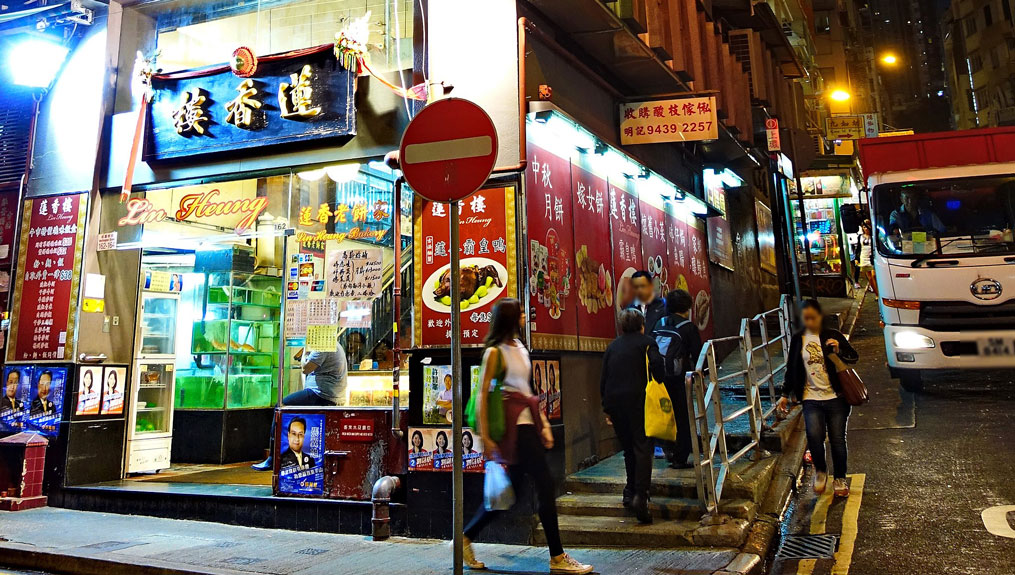Photo by Natali Wiseman
SEATTLE—Seattle has developed a worldwide reputation for its coffee culture, but the city also has a strong contingent of tea devotees, and a provocative new installation at the Seattle Art Museum should be just their cuppa.
Since 2007, SAM’s Porcelain Room has hosted a sparkling display of teapots, cups, saucers, and other decorative items created over the span of a thousand years. For centuries, porcelain objects were among the most precious possessions in any household, and SAM’s exhibit was intentionally designed to echo the displays that Europe’s privileged classes in the 18th and 19th centuries installed in their own homes (and palaces) to show off their collections of porcelain sourced from distant lands.
But what once was considered exotic has become more commonplace, and to a museum visitor who makes it all the way up to the fourth floor, this permanent display of beautiful but static objects might bear some resemblance to the fine china department at Macy’s—so the incentive to stop and engage with the exhibit seems to have diminished.
To counteract that trend, SAM brought in guest curator Erika Massaquoi and London-based ceramic artist Claire Partington to stage an intervention.
The curator and ceramicist considered not only what was in the space, but what was missing from it. They developed a concept that honored the supreme levels of craftsmanship on display, but that also acknowledged the dramatic historical context of porcelain—a story involving globalization, conspicuous consumption, trade wars, and the expendability of laborers.
The result is an installation called “Taking Tea.”
In her first showing in the United States, as well as her first major museum commission, Partington created six large ceramic figures that referenced the much smaller, delicate porcelain figurines on permanent display in the Porcelain Room.
Partington used different techniques to create each figure, but positioned them all atop a gilt-covered table that commands the center of the room.
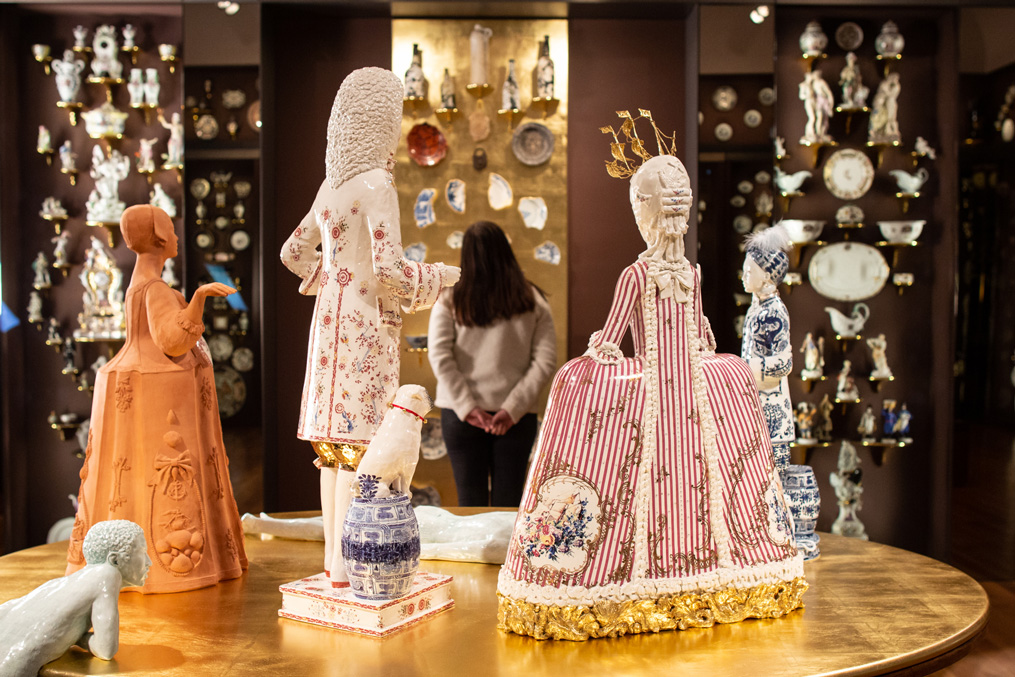
Four of the figures represent teatime in an upper-crust European drawing room in the late 17th or early 18th century: there’s a Man of the House in gilt breeches and his supremely fashion-conscious wife, who wears a golden galleon as a fascinator precariously affixed atop her coiffure.
At their side is a Boy, a servant dressed in the European idea of Chinese style to coordinate with their imported porcelain.
Partington created each of these figures in a different ceramic style to convey the different standards of porcelain. The Boy reflects the pinnacle of Chinese porcelain, the ultimate luxury item. The Man of the House is in the style of English Bow porcelain, an early attempt to copy the superior Asian imports, while the Woman is made in a more advanced European style called Sèvres.

Also on the tabletop is a maid, rendered in red sprigged stoneware, which was the first kind of Chinese ceramic to arrive in Europe. She’s in a stance that brings to mind the “I’m a Little Teapot” song. Noticeably pregnant, the maid rests one hand on her belly, which is emblazoned with a ceramic patch that bears the same pattern as the Man of the House’s frock coat.
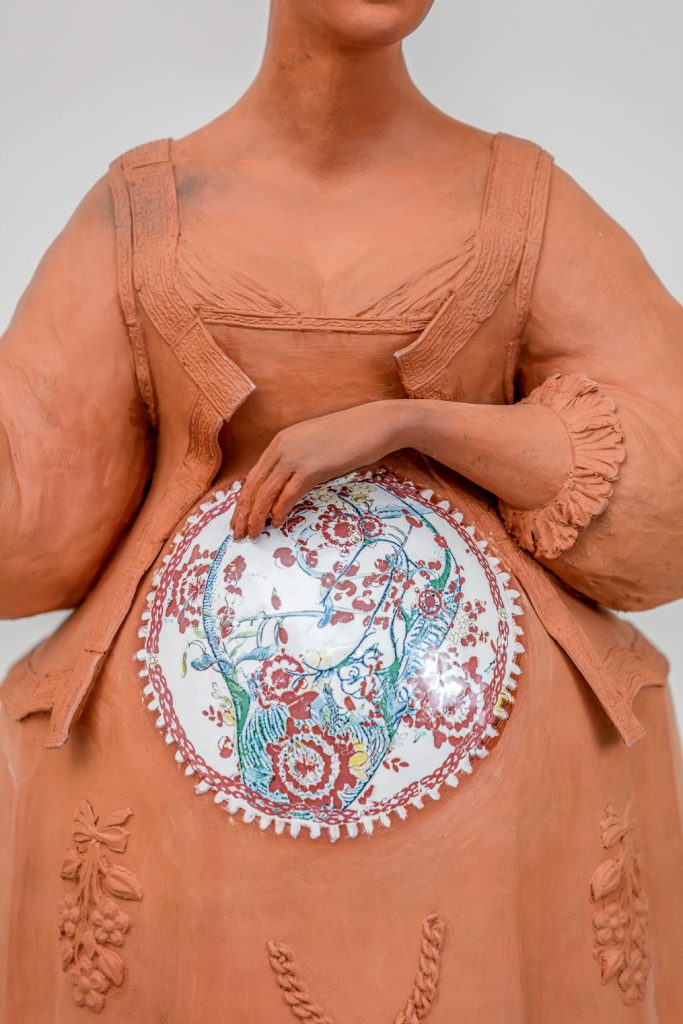
All of the members in this standing quartet of figures are frozen in the pantomime of taking or serving tea, but with phantom vessels; there are no teacups, teapots, or tea trays to be seen.
And apparently unseen by the tea-takers are the two remaining two figures: sailors, slicked in a ghostly celadon glaze. One lies prostrate and apparently lifeless at the feet of the family, while the other clings to the side of the table, his legs dangling below. His back is inscribed with ominous lines describing a shipwreck from Lord Byron’s “Don Juan.”
In a recent interview, Partington said that she wanted to convey the shipping aspect of the porcelain trade, which at first depended on importing from Asia.
“A lot of the sailors would have been press-ganged or enslaved into service and would not have been familiar with the sea, or even able to swim!” she says. “I’m interested in the stories of encounters with sea ‘monsters’ and the stories that surround shipwrecks.”
Shipping was a perilous venture; many ships were lost to storms or sank in conflicts between Dutch, Portuguese, and English competitors.
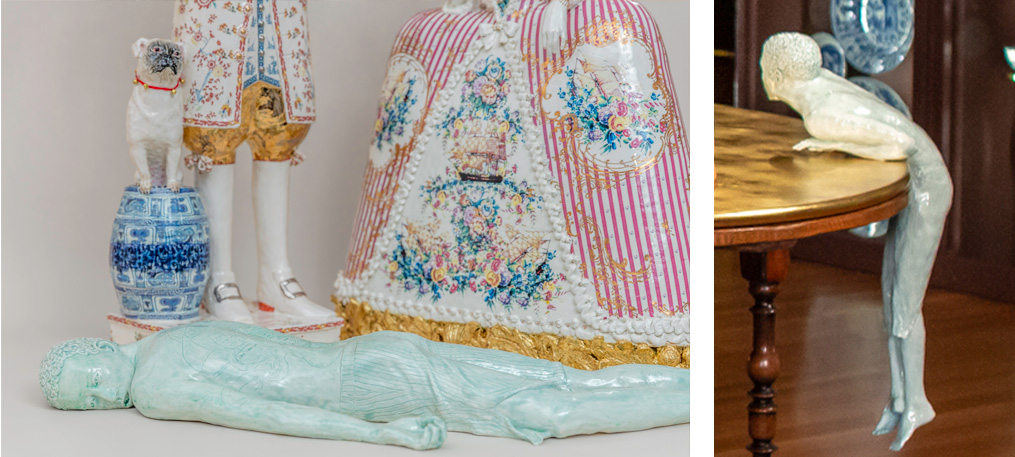
There’s one more kicker in this installation: shards of porcelain that have been recovered from actual shipwrecks. The pieces are encrusted with salt and barnacles.
“In a room of high-end museum quality pieces, I wanted to bring some of the pieces that didn’t survive the shipping route,” says Partington. “I think these give a real link to the precious cargo and the precarious nature of sea voyages.”
Some of these fragments are displayed as elegantly as the porcelain wares in the permanent exhibit. Other shards lie in careless disarray in an open drawer projecting from underneath the gilt tabletop.
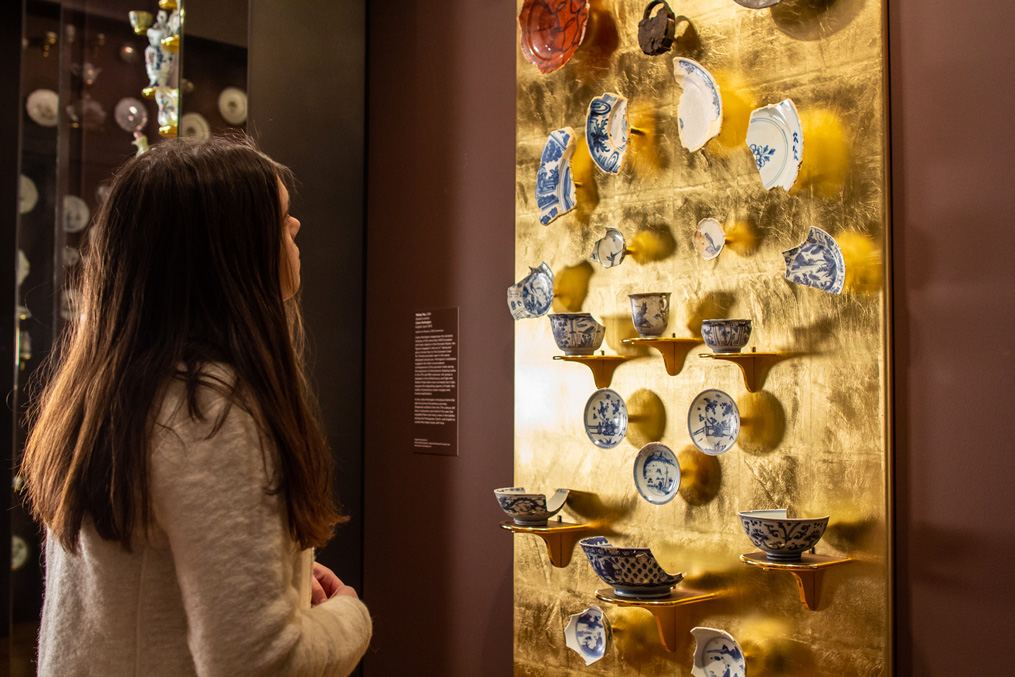
And yet, despite this tangible evidence of the devastating consequences of the tea trade, and ignoring the sailors sprawled at their feet, the couple taking tea keeps their gaze affixed above and beyond, looking out at the dazzling displays of the Porcelain Room.
“Taking Tea” encourages visitors to this exhibit to consider the juxtaposition for themselves.
“Claire Partington: Taking Tea” will be on display through December 6, 2020, in the Porcelain Room at the Seattle Art Museum. During that time, curator Erika Massaquoi will periodically activate the space further with installations of sound, scent, and music.
For more information, visit seattleartmuseum.org.
Barbara Lloyd McMichael writes on cultural topics around the Pacific Northwest.

